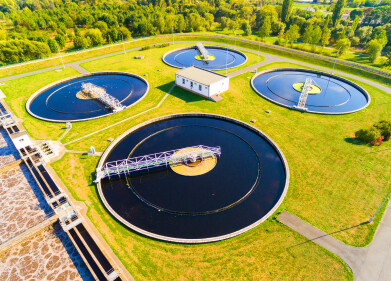Sewage monitoring
Rising mains are UK sewers' weakest points - here's how to fix them
Nov 26 2024
In a recent interview, Martin Duff, Business Development Director for Water at Atmos International, shed light on the critical role of rising sewer mains in wastewater management and the challenges associated with their maintenance and innovation. Atmos International, known for its expertise in pipeline leak detection across industries, is applying its knowledge to improve infrastructure in the water sector.
To watch the interview, click here.
What are rising sewer mains?
Rising sewer mains are essential components of the wastewater network, enabling the transfer of sewage from lower to higher elevations where gravity-fed systems cannot suffice. Duff explained that these mains operate under high pressure, requiring pumps to push sewage uphill before it resumes its gravity-fed flow. Despite making up only 2-3% of the wastewater network, they account for a disproportionate number of system failures.
“These are the weak links in the system,” Duff noted, attributing the vulnerability to their pressurized nature. He highlighted that maintenance of rising sewer mains is often reactive rather than proactive, as limited instrumentation makes it difficult to assess their condition accurately. This results in many pipelines being run to failure before repairs or replacements are initiated.
Producing actionable data is the priority
One of the primary obstacles in maintaining rising sewer mains is the lack of actionable data. While some utilities measure pressure or flow, these metrics alone rarely provide enough insight into a pipeline’s health. “Data isn’t information. Information isn’t knowledge. Knowledge isn’t truth,” Duff emphasized, advocating for deeper analysis and interpretation to guide decisions effectively.
Pipeline replacement decisions are typically based on criticality, considering factors like size and potential environmental impact in the event of a failure. However, the inability to determine real-time conditions complicates the prioritization process, often leading to inefficiencies.
Atmos International is leveraging its expertise from the oil and gas sector to address these challenges. Duff highlighted the adoption of the Negative Pressure Wave Technique, a method that uses high-resolution pressure data to detect leaks in pipelines. This technology, originally designed for the stringent requirements of oil and gas, is now being applied to wastewater systems to enhance their reliability and environmental safety.
Duff also stressed the need for better sensors and instrumentation across the wastewater network to enable predictive maintenance. However, he cautioned that collecting data alone isn’t enough. It must be transformed into actionable insights, a process that requires collaboration between utilities and technology providers like Atmos.
Resistance to change and lack of funding remains a challenge
A significant barrier to adopting new technologies and processes is the limited funding available to water utilities. Duff pointed out that the water sector operates under tighter financial constraints compared to industries like oil and gas, where investments in infrastructure are far greater. “We don’t pay enough for our water and sewage bills,” he remarked, underscoring the need for increased investment to drive innovation.
Additionally, the shift from a product-driven to a service-driven model in the water industry demands a cultural change within utilities. Duff acknowledged that change management and the willingness to embrace new technologies are critical to overcoming the current challenges.
Atmos International is uniquely positioned to influence the water industry by applying its stringent standards from oil and gas to wastewater systems. With a focus on proactive leak detection and innovation-driven solutions, the company aims to transform how water utilities manage their infrastructure. Duff highlighted Atmos’s commitment to reinvesting profits into research and development, ensuring continuous progress in tackling industry challenges.
By encouraging utilities to detect leaks early and embrace new technologies, Atmos is not only addressing immediate concerns but also fostering long-term sustainability in wastewater management.
Digital Edition
IET 35.2 March
April 2025
Air Monitoring - Probe Sampling in Hazardous Areas Under Extreme Conditions - New, Game-Changing Sensor for Methane Emissions - Blue Sky Thinking: a 50-year Retrospective on Technological Prog...
View all digital editions
Events
Apr 29 2025 Edmonton, AB, Canada
Apr 30 2025 Ankara, Turkey
May 06 2025 Nuremberg, Germany
May 10 2025 Karachi, Pakistan
May 11 2025 Vienna, Austria











_(4427399123)-(2).jpg)






